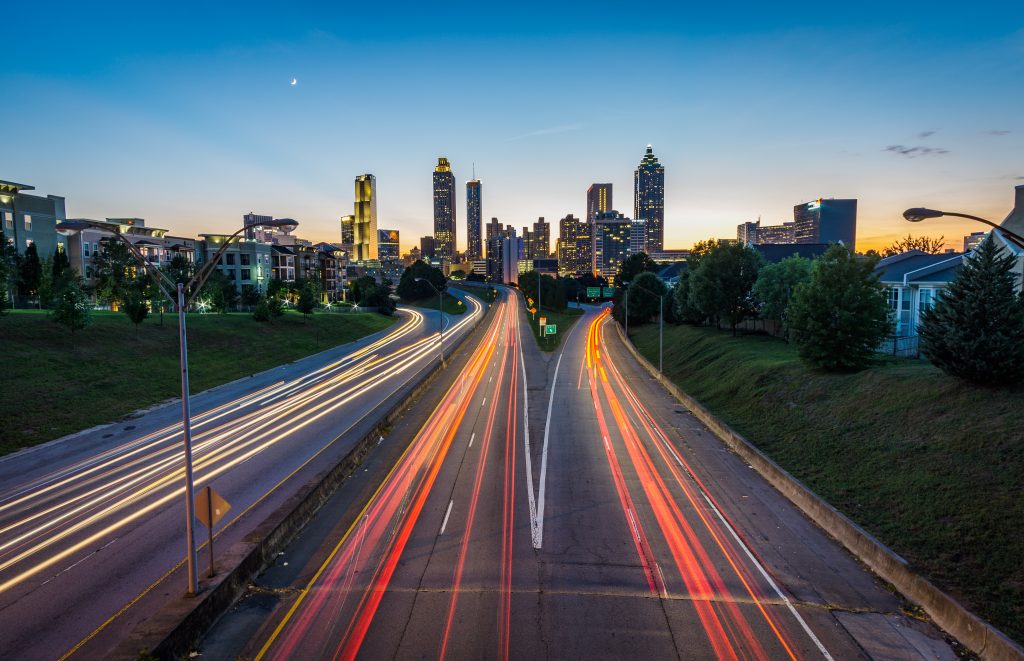Overtourism affects many world’s beautiful cities, which often find themselves unprepared to deal with massive flows of visitors encouraged by low prices and easy mobility. This alienates residents as they suffer from higher prices, unaffordable housing, overcrowded facilities, water and energy over-consumption, noise pollution, waste, and damage to the environment and to cultural heritage.
While new technologies are part of the problem, as peer-to-peer apps and social media have encouraged a focus on a small number of over-visited destinations, smart Information and Communications Technology (ICT) solutions can offer an exit strategy.
London: Mr Bean drives tourists as The Pied Piper of Hamelin
London was one of the first cities to come up with a tech approach to the problem. An example is a branded city app which was launched in 2017 and called Play London with Mr Bean. Its main goal is to help people discover lesser-known parts of the city and its surroundings, drive traffic to them and promote local business.
Nicolai Elmqvist, co-founder and CEO of Pointvoucher, a company that developed the platform, explains: “We followed the example of Las Vegas, where an app was created for different targets. It’s a virtual slot machine you can play for free; it allows you to collect points that become rewards, such as discounts on hotel accommodation.” The London game features Mr Bean, an internationally known fictional character from a British comedy TV programme. In this version, he showcases the hidden gems of the city. While people play, they earn voucher points which can be used to buy real items in shops.
Elmqvist says: “We wanted to create a link between local business and tourists, adding vouchers to their app and leading these visitors out of the city centre. And it worked. Thousands of vouchers were claimed and redeemed at participating shops. Many people played the game and discovered new London sites and attractions that they probably did not know existed.”
According to the data published by the developers of the app, it had 500,000 downloads, 74,000 vouchers claimed, a 2.1-hour average length of play, and the average age of the players was 35, 66% being female and 34% male. “It is difficult to understand to what extent and how the application moved tourists from the city centre to the suburbs, but I’ve got a good feeling about this,” ends Nicolai Elmqvist.
When the Netherlands Board of Tourism said: “More is not always better, certainly not everywhere”
Amsterdam is a relatively small European capital and its downtown area suffers from an excessive number of visitors. Mass tourism was an important asset in addressing the 2008 economic crisis, but in recent years it has become an issue affecting the quality of life of residents.
In December 2018, after 14 years, even the iconic ‘I amsterdam’ sign in front of the Rijksmuseum, one of the hottest selfie spots of the Dutch capital, was removed by the City to kill what it was considered a symbol of mass tourism. In late 2019, Amsterdam decided to increase all tourist taxes and services.
According to the “Perspective 2030” report from the Netherlands Board of Tourism and Conventions (NBTC), the number of incoming visitors is expected to grow from 18 million in 2017 to 29 million in 2030. But it could go up to 42 million by 2030 if the growth enjoyed in the past few years keeps progressing exponentially. All that in a country of 17 million people. “We now know that more is not always better, definitely not everywhere”, the Board of Tourism states in the document, “Instead of promoting the destination, it is time to start managing and developing it.”

In this respect, technology is playing a role in the city’s bid to control overcrowding. The Amsterdam City Card is a case study. It is the official city guide, which gives access to museums, public transport, canal cruise and bike hire, and discounts at restaurants and concerts. The I Amsterdam team, who manages the platform, is using the data stored on the card’s chip to study the behaviour of these tourist masses and try to distribute the flows more sustainably, offering alternative attractions in other districts and the surrounding countryside. Tourists can also download an app to get more useful information straight from their smartphone.
Jan Frejlink, digital producer and in charge of the development of the I Amsterdam website, says: “The app we created is relatively young and basic, even if our city card is the oldest in Europe, as it was launched in the 70s. At the moment we don’t have clear results from the use of our app, but we know where the tourists mainly go. We still have a long way to go in letting them discover places far from the city centre. For example, it is very important that museums and other tourist spots develop their own systems to show people the best time for a visit. But in general, the question is that only a few people use apps, and in particular those linked to tourist destinations. And then, sometimes there can be too many such apps.”
Mobile apps: supply exceeds demand
Engineer and digital strategist Antonio Serra, is founder of Espereal, an Italian agency that studies software and hardware technologies for urban tourism. Regarding the proliferation of mobile apps, he says: “According to the latest numbers, in Italy we have more than 2 million mobile applications. Italians have on average 22 apps on their smartphone, but they only use four of them every day. That’s why the cities that suffer from overtourism should network, share data and develop a single app, able to link info from London, Barcelona, Rome, Venice and so on.”
Serra’s company is also engaged in urban security projects in the city of Turin and deals with the issue of noisy nightlife, another face of overtourism. They are working on a project called “Gentle movida”, which envisages performances by street artists and light shows on monuments and buildings, to attract and disperse people during the overcrowded nights. Through an app, users are informed in real time about scheduled initiatives.
Seasonal Overcrowding: Ostend, Belgium, dreams about smart beaches
Overtourism also includes seasonal crowding, something common to seaside cities. The impact of mass flows is even more significant in small towns, where in high season the residents share with tourists services and infrastructure designed for fewer people.
This is the case in Ostend, the so-called ‘queen of the Belgian seaside resorts’: its beach, fishing harbour and old town draw thousands of visitors every year. Astrid Vanackere, smart city coordinator at the Municipality, says: “We are a small city but, being on the coast, we triple our population in summertime. So, we have problems typical of bigger towns.”
In July-September its population jumps from 70,000 to 250,000, thanks to internal tourists and external visitors mainly coming from Luxembourg, the Netherlands, the Nordic countries, Germany and France. This is one of the reasons why Ostend has become a ‘follower’ city in the EU project MAtchUP. It seeks to replicate the smart solutions tested by the project’s three ‘lighthouse’ cities (Dresden in Germany, Valencia in Spain and Antalya in Turkey) in the energy, mobility and ICT sectors.
According to Vanackere, unification and sharing of data is key to successfully addressing overcrowding. She says: “We are adopting a holistic approach to the question, integrating different apps that give information on different areas, such as tourist attractions, parking places, and weather forecasts. We want to optimise our system to make our city more ecological, affordable and liveable. Looking beyond Europe, it is quite interesting what they’re doing in Dubai, where they have electrical palm trees which give all sorts of info about the city, and even about hubs where people can recharge their phones. It would be great to create a smart beach, or an eco-side on a beach providing news about the weather and other city features.”
The city seems to be very open to advanced technological solutions. For example, the local government has planned to build a smart LED lights pontoon in the harbour, equipped with sensors for tidal waves, solar panels, and instruments for measuring wind and current.
By Loredana Pianta & Alessandro Ajres


